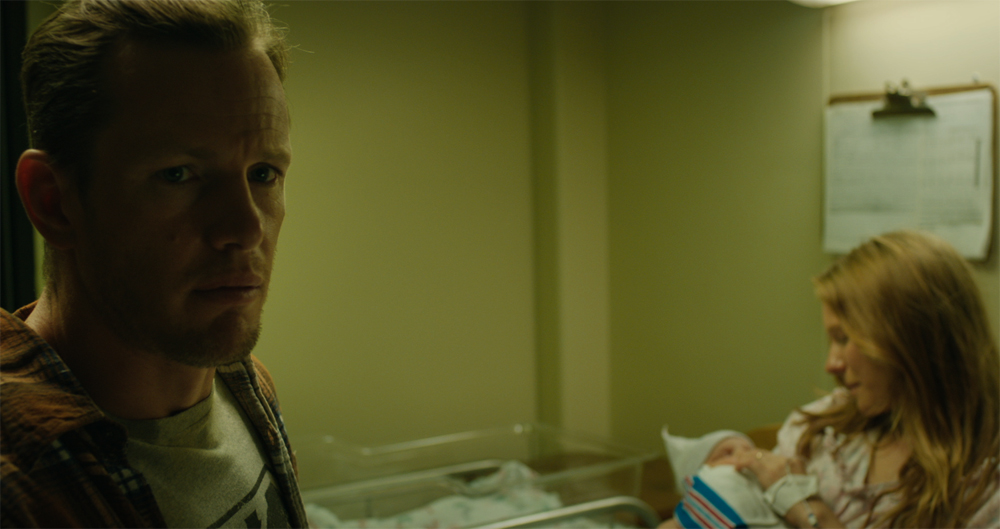When Anne Hamilton was on track to become a lawyer, studying at Yale Law School, her mind would occasionally unspool the case she was looking over as if it were the script for a grand adventure.
“There was a great contract case with the captain of a ship who’s supposed to find a sunken ship and he can’t find it, about a very boring principles that I can’t even remember,” Hamilton recalled recently. “But I remember this guy was trying to find this ship and I’m picturing him at the bowels of the Great Barrier Reef and not being able to find it on the Great Barrier Reef. I couldn’t get him out of my head. I’d get wrapped up in those things and not really caring about what I was supposed to be caring about, so I switched gears.”
In a slightly romantic, slightly arcane gesture, not unlike the kind to be found throughout her bewitching first feature “American Fable,” Hamilton actually went to law school in the first place in part because of a bet she made with a family friend that if John Kerry had beat out George W. Bush for the presidency, she’d be free to pursue what she’d want instead of feeling obligated to preserve the democracy. Perhaps then you can add to the accomplishments of the Obama Administration to small some degree with the job creation for a certain bold new filmmaker, who eventually secured an internship with Terrence Malick and freely acknowledges the influence of Guillermo Del Toro, yet clearly has a distinctive voice all her own.
If there’s a certain grandeur to the title “American Fable,” it isn’t misleading, despite the fact that the film takes place largely on a single farm in Wisconsin where something rotten is happening amidst the hundreds of acres of corn fields tended to by the 11-year-old Gitty, her father Abe (Kip Pardue) and her brother Martin (Gavin MacIntosh). Though the crops are in good shape, they are no longer necessarily at the mercy of the elements, but the whims of corporate interests eager to seize on vulnerable farmers who couldn’t keep up with Reagan-era interest rate hikes to keep their land. A wave of suicides has hit the area and Gitty, aware of the intense stress weighing heavily on the family, can only be tentative when she finds a well-to-do businessman named Jonathan (Richard Schiff) locked in one of the family’s silos, unsure of whether he’s being unfairly threatened or represents a threat himself. With the story told from Gitty’s point of view, her thoughts on who to trust drift into the fantastical and film churns with the excitement and possibility of that age while you see Gitty battle with complications of the real world that she’s only beginning to understand.
“I think real life is great, but the movies that I like aren’t really real life,” says Hamilton. “They’re real life, plus 20 percent that make me feel something that I don’t get to feel in real life. That’s why I go to the movies and so I wanted to be that kind of moviemaker.”
Such an approach made “American Fable” stand out as a welcome anomaly on the festival circuit this past year where it took home prizes from the New Hampshire and Savannah Film Festivals following its premiere at SXSW, and on the eve of its release nationwide, Hamilton spoke about how the film started with its end, working with the local farming community on some of the the key plot points and how the film’s evocative visual style came to be.
I was in this great program called the Directing Workshop for Women where I made a short film that was based on that last scene [in the film] where [Gitty] has the bloody hand [dressing a deer] and this man pulls out [of a car] from the city – that’s where it really started. I was really interested in that image and then I finished the short and I wrote a feature where that was the scene at the end of it and I wanted to focus on this story about this older man and this girl and how they met. I figured the only way they could possibly meet was by him being trapped somewhere. An investor really liked the short and he really liked the script when he read the first version of it, so he funded the movie and we shot it as soon as we could in 2015 because by the time we got financing in place in 2014, it was already winter and we didn’t want to shoot it in winter because that would be horrible. [laughs]
If you started with the last image, did the ideas about industrial farming and being the end of a particular era come in early on?
They intertwined, but as a storyteller, it’s always the story first because you want to make sure that you have something that’s emotional and worth telling because I don’t think people go to the theater to learn about the farming industrial complex. If they learn about the industrial farming complex portrayed in a different light, that’s an added benefit. But I’m from that part of the world and I care very deeply about it and it’s changed dramatically, so I had my own reasons for wanting to tell that particular story because that world has completely vanished and I miss it. It’s the place of my childhood and the motivation for me was to capture that world on film in the way I remember it.
It’s interesting how that plays out in terms of the story — characters can be cruel to each other, I’m thinking in particular how Martin behaves towards Gitty, but you wouldn’t necessarily characterize any of them as villains.
I don’t think Martin had anything really bad happen to him. I think he just saw the future and what he thought was going to happen – he would’ve inherited the farm and he’s not going to most likely if Jonathan survives – and saw a father who was too weak to do anything about it. In his mind, he saw a way out and his conviction and his anger is really [about] the loss of that future that’s been promised to him, so I actually thought it’s a real rational place a lot of people [could relate to] — there’s a piece of Martin in me, a piece of Martin in you and I think Gavin [McIntosh] played him beautifully.

We shot some of it very close to where I grew up — that plane sequence was very close to where I grew up and we had some family friends that had a farm just across the border in Illinois [where] it was so remote and so beautiful that we decided to shoot there. But I had the script in place before we picked a location and we only changed a few things around because of what we had. For example, we had a pig originally to play “Chicken” and we ended up getting three pigs that were not trainable — [our crew] had never trained a pig before — and then it turned out one of the famers had a chicken, so we just switched that out.
Is it true a farmer from the community suggested hiding Jonathan in a silo?
The community was fantastic. We had Steve, this farmer who just knew everybody and it’s a very small city of like 50 people, so the entire town helped us. Steve was on a coyote hunt and he found the silo for us and I was telling another one of my farmer friends, Farmer Al, that I wanted to have this guy [Jonathan] held as a kidnapping victim. “Should I put him in a barn? I don’t know what to do.” [Bryan Forbes’ 1961 film] “Whistle Down the Wind” has [a character] in a barn and [Al was] like, “Oh no, the best place to hide somebody – if you want to have nobody find them – would be in a silo,” which is a creepy thing for somebody to say, but he’s right. [laughs] I remember one of the farmers saying he put his wife down there once, which is not the nicest thing, but it was something that very much was not out of my head.
It’s unusual to see a film shot with wide-angle lenses have such active camera movement, as it is here since it’s tied into Gitty’s perspective. How did that visual style come about?
I’m really proud of that and it’s something that not a lot of people do. We were able to do it because of the setting — there’s enough out there to be able to fill the frame. My favorite people are [Stanley] Kubrick and [David] Lynch when it comes to style and they tend to use wide angle lenses because they tell stories that operate on dream logic. But the nice thing about the wide-angle lens is the 50 [millimeter lens] is what we tend to see, so if it’s like on 18 [millimeter lens], you really feel the world is rushing past you, like it’s bigger than you are, especially if you’re on a steadicam. It’s very dreamlike. You’re really out of control. Nothing’s subjective and for an 11-year-old trying to tell between good and evil, I felt that was the right feeling to have.
You also have such a strong sense of color in this – was that embedded into everything during production or did you toy around with in post?
We did that on set. We wanted to make sure that it was all locked in, so we used some tobacco filters during the day to make it look more like golden hour and dreamlike and we had some cyan filters on the lights in the silos at night. We had a very full color palette, from the costumes – like each character has a different color associated with them that only they get to have and they get to touch. Gitty’s the only one to get to touch red in the entire story — even the clock she looks at to figure out Jonathan’s riddle is red, and the piggy bank, her truck and her pajamas. Nobody else was allowed to have red on them and we have a [general] progression from the golden to the green.

Oh gosh, yes. The first week of shooting, we had a huge rainstorm and we were shooting that scene where Gitty first discovers Jonathan in the silo. We tried to shoot that scene three times and every time there was rain — lightning in the middle of that field, a torrential downpour and that day, the truck got stuck in the mud and it was just crazy. As soon as we started shooting that scene, there was a torrential downpour. So we went back when everybody else had gone home for the final day and we shot it without sound, so the scene that you see of Gitty approaching the silo was done completely without sound. I did her hair and makeup. It was just me and Wyatt [Garfield, the cinematographer] and Peyton [Kennedy], but it was so much better because it wasn’t raining. And the light matched and then we matched the sound — the voice that you hear we dubbed over, so it was pretty cool, but you can’t plan the weather and there’s no rain days. We had to use every single day.
Was directing a feature what you thought it would be?
It was great, but I mean…no, is having a child what you thought it would be? [laughs] You knew it would be huge and you knew it would be life changing and you knew you would love it, but you have no idea what that feels like until you’re feeling it. So it’s been amazing. I’m in love with it and I’m so happy with the way it turned out. and it’s so gratifying to be something that people are going to see in theaters and going to have a life of its own. The festival circuit has been really fun and something I wasn’t really expecting to get to do, but we got into so many of them and every audience is different. People in the Midwest really had a different take than people on the coasts and different things resonated with different people. I remember we showed in Napa Valley the day after the election and everybody was just crying, which was really interesting, and it’s taught me a lot about audiences because you don’t know what’s going to hit people. That’s just a wonderful experience as a director to get to feel that. Like I made you laugh – that’s such a cool thing.
“American Fable” opens on February 17th in New York at the IFC Center and in Los Angeles at the Monica Film Center. It will also be available on VOD.





